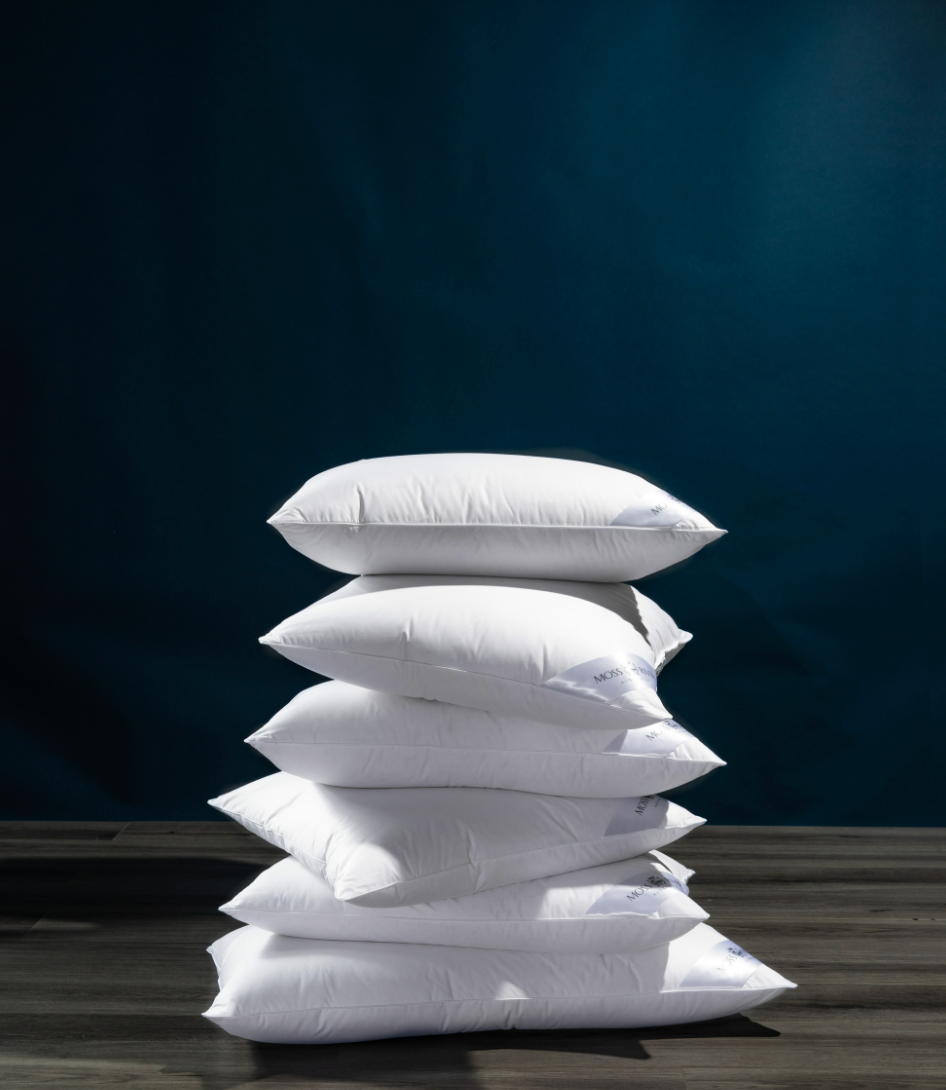
Why we love down and feather Quilts & Pillows
They’re sustainable, warm and soft for the perfect night’s sleep
Share
Feather and down filling has long been considered the superior choice for quality quilts and pillows – it’s the ideal choice for those of us who are drawn to natural products. But what is it about duck and feather bedding that makes it so special? And should it be your first choice to feel like a king or queen?
The difference between down and feathers
If you’re considering buying a down and feather quilt or pillow, it’s important to know how they differ. Feathers and down come from either ducks or geese, but their qualities are quite different. Feather is plumage that’s plucked from the wings or back of the bird. The feathers have a flat structure and a quill in the middle.
Down, on the other hand, is the small feathers found underneath the larger outer feathers and under the neck. Down has a fluffier, loftier appearance, with the down clusters resembling snowflakes.
“Down is softer, warmer and more lightweight, and feathers add support, so a blend is the perfect marriage” explains Polite Society owner Scott Cooke. “A pillow with more down also offers a different sleep experience, in that the down compresses underneath your head, allowing you to sink into the pillow, whereas a pillow with more feather will provide more head support. Everyone has their own preference.”
Another difference is the cost. Down is more expensive because it is not as prevalent as feather and it takes more to fill a pillow or quilt.
And as for the difference between goose and duck down, goose down is rarer, so costs more. “It’s also a better quality, but having said that both our Polish duck and goose feather/downs are premium quality, ethically sourced and harvested, traceable and conform to strict EU sanitary processes,” says Scott.
Down, feather or a mixture of both?
Choosing feathers, down or a mixture of the two is a matter of cost, preference – and where you live.
The 100 per cent European down pillows and quilts sold in Europe are perfect for their chilly winters but would simply be too hot for the Australian climate. “Therefore a blend of feather and down in varying degrees is a perfect combination for Australian customers,” says Scott.
“A general rule is the more down, the warmer a quilt/pillow will be. Customers should buy the blend of down and feather (for example, 50 per cent down/feather or 70 per cent down/30 per cent feather mix) that best suits their climate and their warmth preference,” he explains.
What are the benefits of down and feather?
Let’s cut to the chase. Down/feather quilts and pillows are more expensive than their synthetic counterparts.
“That’s because of the relative rarity of the birds, their upkeep, the labour intensive aspects of harvesting the feather/down, and the washing and sanitising processes,” says Scott. “Synthetic fibres can also be manufactured in larger quantities, which keeps the price down but do not have the breathability and natural benefits of feather/down.”
So why buy down/feather bedding? Firstly, they’re long-lasting; a feather and down pillow, for example, has a longer lifespan compared to between six to twelve months for a polyester pillow. Down/feather pillows and quilts are also luxuriously soft and, according to Scott, “the ultimate eco-material that has accompanied man since the dawn of time”.
“Feather/down quilts are literally, as the saying goes, as light as a feather because although warm, they’re also very lightweight,” he says.
“They are also breathable, which helps to keep out moisture, and temperature-regulating.”
Debunking some feather/down myths
There’s a common misconception that feather/down pillows and quilts cause allergic reactions. While those with a true duck or goose feather allergy should obviously avoid this type of bedding, far more of us are likely to be allergic to dust mites. And a number of scientific studies have shown the average synthetic pillow harbours far more dust mites than the average down or down/feather pillow.
Another myth is that feather/down quilts and pillows can’t be washed. Wrong. They can be machine washed on a gentle cycle and then either tumble-dried at a low temperature or hung to dry.
“You should also air the quilt and pillows regularly,” says Scott. “Put them outside in dappled shade – not full sun – or hang them inside where air can circulate. If storing them, place them inside a perforated bag so they continue to have controlled air circulation.
“Feather/down bedding is an investment,” he adds. “Look after it and it’ll reward you with many years of luxurious service.”
“Down is softer, warmer and more lightweight, and feathers add support, so a blend is the perfect marriage.”











